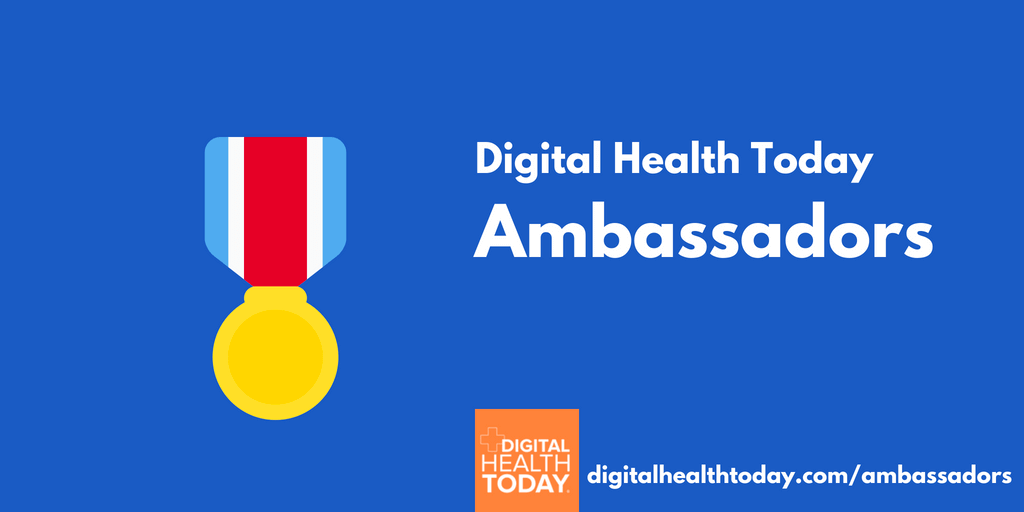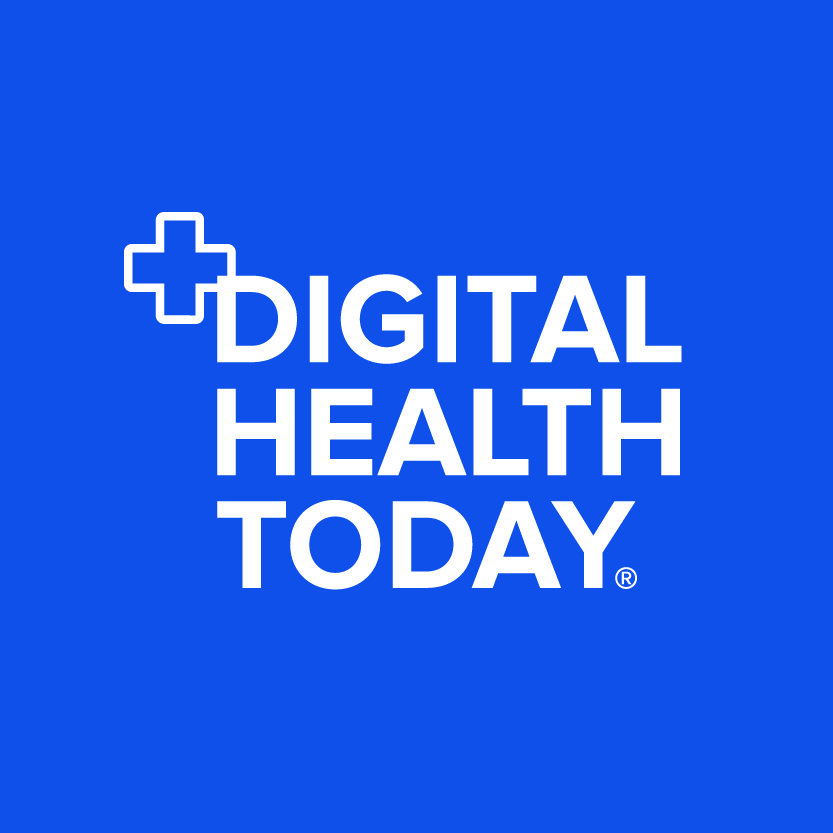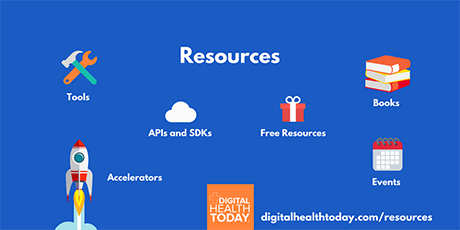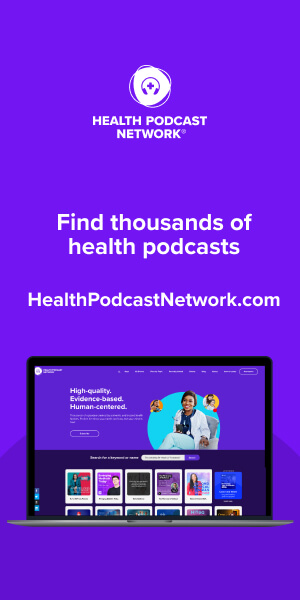Transcript
0:03 Eugene Borukhovich
Welcome to Digital Therapeutics Edition of Digital Health Today. I’m your host Eugene Borukhovich.
In the last episode, I had the pleasure of speaking with Edward Kliphuis, partner at Amadeus Capital and venture advisor at M Ventures. We spoke in-depth about prescription digital therapeutics and the market dynamics of this sub-industry.
In this episode, we hop over to Southeast Asia to get a taste of the vast opportunity for digital therapeutics in the region. Abhishek Shah, CEO and founder of Wellthy Therapeutics, was actually one of the first amazing entrepreneur interviews I recorded back in December of 2020– until I changed the storyline around of the series. In their own words, Wellthy works with pharmaceuticals, medical device manufacturers, and health hospital systems to design and deploy clinically-validated digital therapeutic solutions to achieve real-world clinical and business outcomes across multiple therapeutic areas.
Since we have spoken, Wellthy is now eyeing geographical expansion to international markets within APAC and Europe. But before we dive in, I met Abhishek at one of the early Health Excel events in Dublin, but I really got to know him as Wellthy Therapeutics entered the Bayer G4A accelerator program while I was still there. Abhishek and I took some long walks in the Berlin Tiergarten where I learned a lot about him. He’s sharp, determined, and overall a wealth of knowledge (pun intended). And now we jump to my conversation with Abhishek.
So I’m here with Abhishek Shah, CEO of Wellthy Therapeutics, welcome to the DTx podcast. If you don’t mind, go back years ago, and give us a little bit of your history. How you became a CEO of Wellthy, and your personal background?
1:59 Abhishek Shah
Sure. Thanks, Eugene, for having me. So way back– not all the way back to when I was [inaudible]– but I guess I had a moment when I was an early-stage venture investor looking at incredible companies to invest, into incredible founders. While it was easily a product market fit where a job is concerned, what was fundamentally FOMO about it was the fact that I had the opportunity to invest in people who would then go out to build stuff, but I wasn’t actually building stuff myself. And “what drives me?” was still a question that I had to answer for myself.
So I went on a fishing expedition– what’s the problem that I would want to solve? I answered that initial question when I had the opportunity to work in some of the businesses– one my mother runs, and one of my father runs– in healthcare. But that wasn’t it. I found incredible companies to invest into consumer tech. That wasn’t it. So as I went into that journey of figuring it out, the intersection of consumer tech and healthcare is where I became it. But it wasn’t so much the solution that excited me as much as it was the problem. When you go on that path of discovery, sometimes you see things that you weren’t necessarily seeing earlier.
I saw two incredible entrepreneurs in both my parents who were extremely intellectual, mentors to me, and people I look up to. Yet when they look at their own health– their cardiovascular patients, hypertension patients, diabetes patients– they’re like the best thing for the pharmaceutical industry, because they’re moving from one pill a day, to two pills a day, to four pills a day, to five pills a day. You can see that pills aren’t enough, and having access to the best quality healthcare isn’t enough. There is a gap in there; there wasn’t a term for it then– or there was, but it was not a buzzword like it is now. How can you intersect that time of the patient’s life from the patient’s lens and drive real-world outcomes from that?
The geek in me took over and said, okay, this is a problem that I can’t be the first person looking at. I went into PubMed, and many nights later (I went back to my college days, where I just started reading, and reading, and reading, before an examination), and I came back with that realization: hold on, this is something that is solvable. There is, at the very least, protocol-driven care that can become virtual. At the very best, behavioral science and a whole bunch of other biomarkers that have come into play to drive better real-world outcomes, and this entire gamut of things in between, this is worth looking into. But I [was] not yet convinced to start a company, but convinced enough to spend the next six months or one year of my life looking into this.
4:42 Eugene Borukhovich
What year was that?
4:43 Abhishek Shah
That was 2016. So [I] engaged good old WhatsApp, got the approval to do a study, got patients, got doctors– recruited patients from everywhere, including going on the promenade and having a little billboard up and saying, “would you like to participate?” I was really lucky. With a bare bones team– a bunch of interns and equally motivated individuals– I was able to prove to myself and to the community that digital, when combined into a protocol-driven intervention, can actually drive an improvement in somebody’s life. Not just on the clinical biomarkers but truly make a difference in their lives: on the emotional side, on their confidence side, on their quality of life. That was the “it” moment. That was the mic drop. That’s when I said this is something that is worth solving for. It doesn’t matter how; we’ll figure that out. But this is a problem that is going to keep us excited for the foreseeable future. That’s what led to the company.
5:45 Eugene Borukhovich
So born into a family of entrepreneurs– I’m sure you learned a lot– spent time in both the venture capital side (from an investor perspective), and then you’d basically decided, well, I need to be a practitioner of building a company, not just talking about it or investing in it. To your point earlier, as you dove into PubMed [in 2016], digital therapeutics was still not a buzzword; [it] was still earlier days. As [you were] already an investor on one side, can you talk a little bit about what that took to convince initial investors? Yes, you had some great proof points, recruiting patients on the streets (which is a fascinating story), but DTx– could people even spell it? What does that mean? What was the journey of getting that initial investment? Can you talk a little bit about that?
6:40 Abhishek Shah
I was actually meaning to write up on this, because I never got around to it, on the sheer amount of investors, that–
6:47 Eugene Borukhovich
You can never find time, you have to make time for it. Just as a side note.
6:51 Abhishek Shah
I know, you’re the biggest believer of that, and I agree with you. So I didn’t make time to write out this little blog that I had cooked up in my head of the amount of conversations I had with incredible investors who believed in me but didn’t unfortunately believe that digital medicine or digital therapeutics was the path to get there. Versus: the minute I would have agreed to direct-to-consumer, there was a multi-million dollar check waiting. But if it’s down the path of, “let’s go out and do the boring stuff of clinical studies and clinical validation,” and all the regulatory pathways and showing safety and efficacy, [investors think] “hold on, you’re going to tell me that there is no revenue for the foreseeable future? Pass.” That was the journey.
I mean, it didn’t matter whether you were an ex-VC or you were somebody that came with the right credentials. I was fortunate enough to learn a lesson really early on, both as somebody who has been an investor and then as somebody who was raising, that the right investor matters. The right investor matters, not on the valuation side (it really doesn’t matter what value at which you raise), but do they believe in your vision? Do they believe in the journey that you’re embarking on? And do they understand what success looks like? Because success in [the] non-consumer world when you’re doing a seed round, isn’t about the revenue, the GMV, the number of users, and all the other metrics that otherwise make fundamental sense when you’re doing direct-to-consumer.
If the path is– and in my case, that path was– about B2B2C, it’s about clinical validation; showcasing that this can actually work. You can actually build a claims universe and a series of claims that can allow you to go to the next stage. So I have no recollection as to how many, but I do think it was maybe anywhere between 25 and 50 conversations.
We didn’t raise, by the way, until two years plus, after the company was formed. We’ve actually put in a fair amount of our own capital, because that decision came from speaking to investors. If direct-to-consumer is not the way that we were looking to go, and clinical validation was what we seek upfront, then we might as well fund that with our own capital, and only go out and raise capital when we’re closer to at least halfway [inaudible].
9:23 Eugene Borukhovich
Get some proof points and hit some milestones for yourself, right?
9:26 Abhishek Shah
It ended up being a win, because it was unadulterated [for] two years, which allowed us to do something with it. And I’m glad for it.
9:33 Eugene Borukhovich
So I’m back on the entrepreneurial train myself. And of course, as any other entrepreneur, there are some hypotheses you have [about] a business model or revenue stream. Maybe you can also contrast those really early days, when you went out on the streets and you got some interesting feedback and recruited patients. Can you talk about your hypothesis for a business model or revenue stream, and how that changed over time?
10:03 Abhishek Shah
I genuinely believed that every revenue [inaudible] was possible. If you could improve outcomes, that economic value could be unlocked, and that would reflect into something with the physician, something with the health system, something with the payer, something with pharma, something with device, something with direct-to-consumer, something with employers. And the reality is all of them are possible, but you have to focus.
I would say we had MVP success with each one, but what we gravitated more and more towards was those that care about outcomes. That ended up being much more the institutional players, which have something to gain with an improvement in outcomes. We tried every revenue model, especially because we could and it was open canvas. And it is an open canvas in South Asia, to a large extent. But what really worked for us was doubling down on what actually did work, and then investing more and more on that. The journey took off on its own. So [inaudible] hypothesis that ended up being proven wrong in the journey of revenue, even in the journey of scale.
But the first principles still remain solid, which is, let’s improve somebody’s health and then figure out how we’re going to get paid for it.
11:15 Eugene Borukhovich
I’m sure many things have changed in four years, but at the same time, many things stayed the same. So can you describe to our listeners South Asia’s landscape of DTx? It’s a buzzword, and it’s exploding, but I’m sure outside of the “DTx geeks” that probably listen to this, most people don’t even know what digital therapeutic is. Can you describe [the] landscape and, to a certain extent, [the] regulatory framework? Not in detail, but just high-level.
11:45 Abhishek Shah
At the high-level, everything’s still evolving. There isn’t one market in South Asia where DTx is regulated, or even digital medicine, is regulated. That journey is only beginning now. So telemedicine is much more recent in most markets in South Asia.
Telemedicine went into the regulatory universe only because of COVID, which is fantastic that it happened. That normally starts that evolutionary curve, which eventually leads to remote patient monitoring, digital therapeutics, and a whole bunch in between, starting to get regulated. But it’s very early days right now. In fact, because of that, we have the unique opportunity of having that voice heard and felt in the legislation and thinking through the legislation. So really early days on regulation.
From a landscape perspective, you’re seeing an incredible amount of innovators work towards solving for specific pain points, but they are doing this more as a B2C. Very few are looking at it from a B2B2C perspective. When you’re thinking about B2C over a period of time in South Asia, it’s all about different needs of the end user, and outcomes being one of them. Therefore– you’ll see this evidence through PubMed– not a lot of clinical evidence, studies, [or] publications make their way where digital therapeutics are trying to showcase an improvement in outcomes. Because at the end of the day, when your entire market is out-of-pocket, who’s going to pay? And that matters, right? Even in our journey, we saw that.
While there is an incredible opportunity in South Asia, because it’s completely open (and to that extent, Southeast Asia and Asia) that means if you’re investing in these markets, you can see adoption, which is unprecedented. You have to remember at the core, it still requires somebody to pay. Whether that somebody is pharma or that somebody is a payer– and in all cases, it boils down to the payer– how do you build that pathway? That’s super important. So [we’re] seeing a lot of companies more and more now. But [they are] largely direct-to-consumer.
There’s a reason why South Asia, and especially India, ended up being the pharma capital of the world, beyond the point where a lot of incredible pharma companies are built out of here, because there is an essential understanding of how to deliver some part of the healthcare value chain– sitting out of one market and then globally expanding. That allows for incredible talent to be available in the region. But putting those pieces together and making sure that you’re able to drive outcomes at scale, that’s what excites us.
14:08 Eugene Borukhovich
Maybe you can talk a little bit about the markets that you’re operating in. I can also imagine, from a pricing perspective (and even if you do B2B2C or D2C), the price points are not what are expected or seen in some parts of the West. I’ve come across some of your presentations back in the day, so you can touch on that.
14:29 Abhishek Shah
Price is relative to cost of care. So if your average cost of care, which in India (at least by the studies) are between– say if you look at type two diabetes– $200, $300/year. What is the delta improvement going to be valued at? That’s something to think about. So India versus regulated Asia versus Europe, three markets in which we’re operating, the delta is between 15 and 25 times what India would be. So price points are obviously a lot lower, but the gap in care is actually a lot wider. It’s an interesting mix. You want to do more in the country in which you’re operating or you see the gap in care, because the gap in care isn’t just about better quality outcomes. It’s about access to primary care (which is non-existent), equality of care (which is heavily biased towards those that have disposable income). Those are different problems that you end up addressing. But the beautiful part is you still end up using, at least in our world, digital therapeutics as a pathway to get there.
15:34 Eugene Borukhovich
For the masses, it’s a little bit difficult to grasp what is a digital therapeutic. So one of the questions I’m always asking is, what is that health consumer experience with your product? As a patient/health consumer, what do I get with Wellthy Therapeutics? How do I operate it?
15:58 Abhishek Shah
It’s a great question. It’s the one that keeps us up as well. What does that user journey look like? Because it’s sure as hell isn’t a user journey on an app. It’s how does our product or service intertwine into your daily life, in a manner in which you can just live that life better, healthier, than you did before we ever came along? Therefore, everything we do is about understanding pain points, opportunities, gaps in your daily life, which we can help solve for, or we can enable the healthcare system to solve for, if it’s not a software-based solution.
So if it’s a person with asthma, of course there’s the connected cap on the inhaler, and then there’s a whole kit that comes to your home, but it’s much more about how do I understand what your daily living looks like? Where you go to work, where you’re at home? What the weather patterns are around there? What are the environmental triggers that have caused an event earlier? What is it that you’re scared about? And then how do I give you, for lack of a better word, that Google [inaudible], and combine that with the alert mechanisms that are really necessary, so that we can play both an active and a passive part in your life.
That word “passive” is so powerful when you’re looking at a user’s journey. How many users really want to remember that they have a chronic condition? Very rare. Yes, they want to do something about it, but they don’t necessarily want to be reminded. So how do you play that passive role in that member’s journey? Whether it is helping you with a better physician appointment, helping you with better access to medicine, helping you with a better tip or a trick that allowed you to avert that potential event that would have otherwise happened? Help you in making decisions through your journey, through your days, through your hour, through that time of the day, so that you’re able to live a better life, a stress-free life? How do we help you in mental health?
It’s all of those things that drive us to be able to build better experiences, but whether or not we’re solving for respiratory conditions, or cardiology conditions, or of course diabetes conditions, it’s looking at a day in the life– or a week in the life, or a month in the life– and then intertwining our experience into that. It started with the app experience; it augmented to enabling virtual care through the platform. It went then into clinical decision support to healthcare professionals where they could play a role in your life. And now it’s moving into connected devices, and then the entire predictive world that comes with the slew of new data. So it’s evolving, and it’s definitely different for different pieces of the disease journey. But that’s what it is.
18:54 Eugene Borukhovich
You’ve started talking about DTA, it’s software-based interventions. I had on our first episode with Brian Dolan, a long discussion around some delineation between the PDT– the prescription digital therapeutic that very much follows the pharma route to market access– [and] what you’ve described as care coordination/disease management. Can you describe where your head is between PDT and care coordination, or health management services?
19:41 Abhishek Shah
We’ve been fortunate to be operating in both. We’re on the care coordination side, as well as the PDT side. What keeps us rooted in first principles is, at the end of the day, what’s necessary for driving better outcomes? In certain situations, that pathway requires digital care. In certain situations, that pathway can stop at digital therapeutics. So we don’t see ourselves as a company that will say we will do only x, and that’s it. Our loyalty is to the patient, and therefore, depending upon the condition and what’s the right pathway to make sure we can help that patient’s health improve in that condition, that’s the pathway we take. Therefore, the way our head is at is, if it’s a unit, that unit is, what’s the claim that we’re looking to make? That’s where everything begins.
If the claim is something that eventually needs to be going down the PDTx route, and it’s a claim that needs to sit outside of any virtual care whatsoever, then the pathway we will take will be similar. We are right now, for example, doing it for one of our indications, similar to how a PDTx would operate. But if the claim is not necessarily about making a FDA filing or going down that pathway, but actually, it’s about how do you drive better clinical decision support, how do you drive better ability to drive outcomes (including what a physician can do, what a health coach can do, including ABC) then we take the digital care route. I wouldn’t even say we’ve done it out of convenience; it’s been done out of, what’s the claim that we’re looking to make, and what’s actually going to help that patient’s life get better? Depending upon the condition, and depending upon what we need to do in that condition, we choose the pathway and stick to it.
21:35 Eugene Borukhovich
You know my background coming out of pharma, and I know one of your investors is also a pharmaceutical company. I also know that part of your business model is working with pharma. Having said that, I always question, is it the DTx companies with the surrounding experience and novel ways of doing care coordination that will swallow that pill inside? Or will the pharma companies swallow the DTx company? I’m curious as a fellow entrepreneur, your thoughts on it.
22:14 Abhishek Shah
If I had to look at the next decade or so, I would say from a patient perspective, they will find much deeper engagement with digital therapy, and then pharma will be a part of that, as it should be. But when it comes to the reality of where the organizations will move, pharma are cash-generating machines. And as a result, they will inevitably, at least in the first wave of things, be the ones that will swallow the DTx. But there’s a difference between who owns it versus who experiences it. I do believe the patient will experience, and therefore have recall, for the digital therapy much more, but that asset may still be owned by pharma. And that’s perfectly fine, because at the core, it’s about improving outcomes.
23:04 Eugene Borukhovich
It’s time for a question from my journalistic partner on this podcast, Brian Dolan, who is the founder of Exits & Outcomes, and as I like to call him, the digital health detective. Let’s see what question Brian has for our guest today.
23:17 Brian Dolan
Okay, here’s my question. Earlier this year, I spoke with Apollo Hospitals about some of their new digital health initiatives, which launched just before the pandemic struck. So Apollo has been a digital pioneer in India for years, but it seems like the pandemic has helped spur them on to move even more quickly to digitize their care system. So has competition increased for Wellthy in India, from big providers like Apollo who seem to be building out their digital health offerings amidst the pandemic?
23:46 Abhishek Shah
Thanks, Brian, for the question. It’s early days to know the answer to that, just given the sheer size and scale of markets that are in South Asia, especially India. Apollo, and companies like Apollo, have launched digital health initiatives, but the first wave of competition is actually going to be standalone telemedicine providers. Because that’s the first piece of the puzzle that Apollo and companies like Apollo have actually tried to solve for, which is how do I actually solve for access to primary care. Within that, the next gamut of things is, how do I solve for access to diagnostic, how do I solve for access to pharmacy, and my refilling of medication?
So you’re seeing e-pharmacies and telehealth as the first recipients of that onslaught.
But even then, I wouldn’t say that they’re really feeling it. Because what also happened in the pandemic was an absolute dip when it came to footfalls on consults in general. So if you have OPD or outpatient departments, which we shut down for a few months, and [are] still wiggling their way back up, it’s still very early days to even get that number back to what it used to be.
That first wave will be fought between the incumbents like Apollo and the large-scale telemedicine and pharmacy companies. They haven’t yet gotten to [a] very deep, domain-specific digital care solutions. We still actually have hospital systems wanting to work with digital therapeutic companies, to come up with ways in which they can improve patient outcomes for specific indications and specific use cases. So we’ve not yet voted. But I do believe that as that continues, and deep domain expertise for each specific therapeutic area becomes the next wave, that’s something that’ll be really interesting to see.
25:38 Eugene Borukhovich
A lot of the entrepreneurs, especially the ones that are the “pure” digital therapeutics (as a technology), I think sometimes the expectation is people will just use it. If you build it, they will come. And then we all learn that doctors, nurses, and to certain extent, health coaches, are [a] required part of the journey. Where’s your head on this? How do you leverage that knowledge and power of human beings surrounding DTx?
26:07 Abhishek Shah
I couldn’t agree more, that you still need physicians, health coaches, nurses, as a part of the journey to drive better outcomes. It conflicts with the pathway that PDTx needs to have in order to thrive, regulatory approval, and go down the route. So I wish there was that perfect answer. It does take the equivalent of a utility like WhatsApp, or an entertainment value like Netflix, to reach a point where patients are on it because they want to be on it, and they’re engaged and continue to be engaged without the need for human intervention. That they will come as we build better and better experiences. But we’re not there yet. For sure. Therefore, the need for paramedicals and [inaudible] as part of the journey, I don’t think that’s going away.
If you ask me personally, not just on the onboarding and initiation side, but honestly, through the care continuum, you still see that sort of happening. How regulators will react to that remains to be seen. It may be that regulators will split it into, you know, if you’re a digital carrier on the telemedicine side, and if you’re a digital therapeutic, then you’re in the PDTx and therefore, regulatory approval down that route. But there’s a place for both. [The] patient is at the center role. They will govern what engages them. Because if you don’t see patient engagement, you don’t have anything.
27:30 Eugene Borukhovich
Finally, for our listeners, we kicked off with your personal journey into the DTx space. But I also want to know what is your why, and what gets you up in the morning?
27:41 Abhishek Shah
Honestly, I know it sounds really cheesy, but we’re in it to improve health outcomes. And what gets us up every morning is, ironically, not the fact that we are doing something that makes a difference. It’s actually that we’re doing something extremely challenging. That’s the “why” that gets me up every morning. Honestly, if it was easy, I don’t think I’d be doing this. What is really, truly exciting is that it’s challenging. It’s extremely risky. “Moonshot” is not even the word for it. But at the core, every minutia, positive movement that you’re making, is actually helping patients’ lives and is driving a benefit to the larger healthcare ecosystem. So that’s what really keeps me up. And this decade, oh my God, it’s the most exciting it ever was for digital health digital therapeutics, spurred [by] COVID. I’m really, really excited about the years ahead, because if there ever was a time for digital health and digital medicine, real-world outcomes, it’s now
28:47 Eugene Borukhovich
Absolutely agreed. Thank you very much for taking the time, and I’m looking forward to our next discussion.
28:54 Abhishek Shah
Take care. Thanks for having me.
28:57 Eugene Borukhovich
Thanks so much for tuning into Digital Therapeutics Edition of Digital Health Today, a production of Mission Based Media. Be sure to hit that subscribe button to this podcast on your favorite podcast player, so you’re then automatically notified when we post our upcoming episodes, where I speak with dozens of leaders and trailblazers who are forging the path for digital therapeutics. If you’d like to learn more about YourCoach Health, or Brian Dolan’s Exits & Outcomes, you can always find the links to this and more in the show notes for this episode. You can connect with me personally on Twitter @HealthEugene, or follow my journey of writing my first book, Hard Pill to Swallow, at [email protected].
I’m Eugene Borukhovich, and catch you next time.




